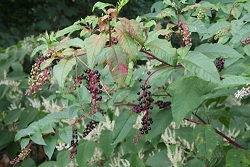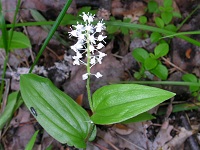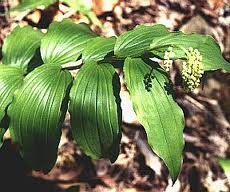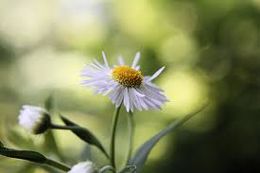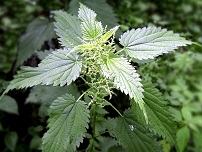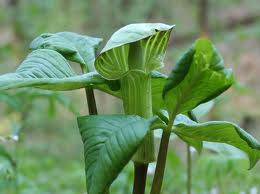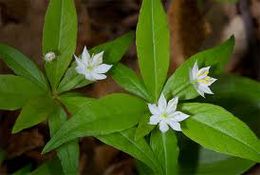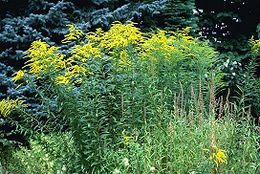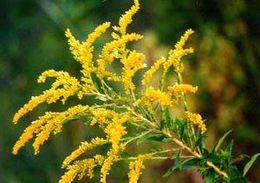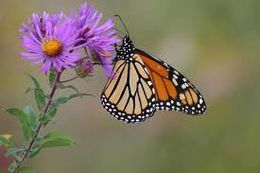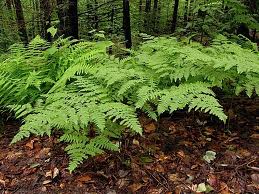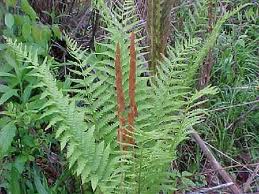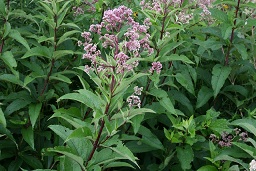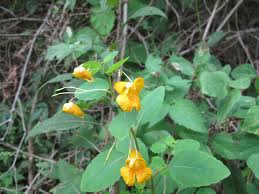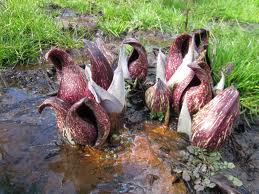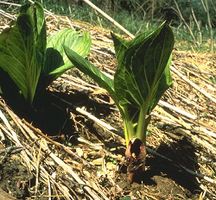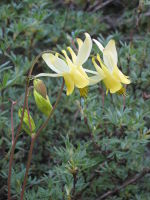Difference between revisions of "Flora And Fauna:Wild Flowers"
Jump to navigation
Jump to search
(Development) |
|||
| (6 intermediate revisions by the same user not shown) | |||
| Line 1: | Line 1: | ||
{{In And Around Lexington Header}} | {{In And Around Lexington Header}} | ||
<!-- The line above is needed in order to display the right side help menu --> | <!-- The line above is needed in order to display the right side help menu --> | ||
== Yarrow == | |||
*''Achillea millefolium'' | |||
*To 40 in. (1 m) | |||
*Flowers are white to pink | |||
*Leaves are fern like | |||
<gallery widths="260px" heights="200px" perrow="3"> | |||
File:yarrow.jpg | Yarrow | |||
</gallery> | |||
== Pokeweed == | |||
*''Achillea millefolium'' | |||
*To 10 ft (3 m) | |||
*Grows in fields and waste areas | |||
*Berries are toxic when raw but cooked juice is edible. The seeds remain toxic after cooking. | |||
*Berries were used for ink making | |||
<gallery widths="260px" heights="200px" perrow="3"> | |||
File:pokeweed.jpg | Pokeweed | |||
</gallery> | |||
== Canada Mayflower == | |||
*''Maianthemum canadense'' | |||
*To 6 in (15 cm) | |||
*Perennial | |||
*Has 1 to 3 leaves | |||
*Cluster of white flowers held above the leaves | |||
*Berry fruit becomes red and translucent when ripe | |||
<gallery widths="260px" heights="200px" perrow="3"> | |||
File:canada_mayflower.jpg | Canada Mayflower | |||
</gallery> | |||
== False Solomon Seal == | |||
*''Maianthemum racemosum'' | |||
*To 2 ft (60 cm) | |||
*Perennial | |||
*Leaves elongated and alternating | |||
*Round fruit turns red when ripe | |||
<gallery widths="260px" heights="200px" perrow="3"> | |||
File:false_solomon_seal.jpg | False Solomon Seal | |||
</gallery> | |||
== Daisy Fleabane == | |||
*''Erigeron strigosus'' | |||
*To 5 ft (1.5 m) | |||
*May be annual or biennial | |||
*Name derived from the belief that the dried plants repelled fleas | |||
*Flowers are white, pink or lavender and have yellow disk | |||
<gallery widths="260px" heights="200px" perrow="3"> | |||
File:daisy_fleabane.jpg | Daisy Fleabane | |||
</gallery> | |||
== Stinging Nettle == | |||
*''Urtica dioica'' | |||
*To 4 ft (1.2 m) | |||
*Touching plant hairs produces burning sensation | |||
<gallery widths="260px" heights="200px" perrow="3"> | |||
File:stinging_nettle.jpg | Stinging Nettle | |||
</gallery> | |||
== Jack in the Pulpit == | |||
*''Arisaema triphyllum'' | |||
*To 3 ft (90 cm) | |||
*Herbaceous perennial plant | |||
*Curving hood ("Pulpit") covers over fingerlike central stem ("Jack") | |||
<gallery widths="260px" heights="200px" perrow="3"> | |||
File:jack_in_the_pulpit.jpg | Jack in the Pulpit | |||
</gallery> | |||
== Starflower == | |||
*''Trientalis borealis'' | |||
*To 8 in (20 cm) | |||
*Perennial | |||
<gallery widths="260px" heights="200px" perrow="3"> | |||
File:starflower.jpg | Starflower | |||
</gallery> | |||
== Goldenrod == | |||
*''Solidago'' genus | |||
*To 5 ft (1.5 m) | |||
*Perennial | |||
*Large clusters of small yellow flowers that appear from the end of summer until frost | |||
*Grows in open meadows, on the side of the road, in garbage areas | |||
*Produces golden yellow dye | |||
<gallery widths="260px" heights="200px" perrow="3"> | |||
File:goldenrod.jpg | Goldenrod | |||
File:goldenrod_flower.jpg | Goldenrod Flower | |||
</gallery> | |||
== New England Aster == | |||
*''Symphyotrichum novae-angliae'' (formerly ''Aster novae-angliae'') | |||
*To 7 ft (2.1 m) | |||
*Perennial | |||
*Gold disk florets at tip of stems, surrounded by 30 or more ray florets that are purple, lavender, or light pink | |||
*Long leaves alternating along central stem and side branches which are covered with short white hairs | |||
<gallery widths="260px" heights="200px" perrow="3"> | |||
File:new_england_aster.jpg | New England Aster | |||
</gallery> | |||
== Bracken Fern == | |||
*''Pteridium aquilinum'' | |||
*To 5 ft (1.5 m) | |||
*Perennial | |||
*Instead of leaves, ferns have what are called fronds, subdivided in leaflets with small pinnae. | |||
*Bracken fronds are shaped like triangles | |||
*Grows in large colonies | |||
<gallery widths="260px" heights="200px" perrow="3"> | |||
File:bracken_fern.jpg | Bracken Fern | |||
</gallery> | |||
== Cinnamon Fern == | |||
*''Osmundastrum cinnamomeum'' | |||
*To 3 ft (90 cm) | |||
*Likes moist and marshy soil | |||
*Spreads by spores made on smaller cinnamon-colored frods | |||
<gallery widths="260px" heights="200px" perrow="3"> | |||
File:cinnamon_fern.jpg | Cinnamon Fern | |||
</gallery> | |||
== Common Milkweed == | |||
*''Asclepias syriaca'' | |||
*To 6 ft (1.8 m) | |||
*Stem and leaves produce a white latex when broken | |||
<gallery widths="260px" heights="200px" perrow="3"> | |||
File:common_milkweed.jpg | Common Milkweed | |||
</gallery> | |||
== Joe-Pye Weed == | |||
*''Eutrochium'' genus | |||
*To 7 ft (2.1 m) | |||
*Occurs naturally in moist and very wet soils, but also tolerates garden soil that is not too dry | |||
*Was used by New England healer Joe Pye to treat a variety of ailments, therefore the name | |||
<gallery widths="260px" heights="200px" perrow="3"> | |||
File:joe_pye_weed.jpg | Joe-Pye Weed | |||
</gallery> | |||
== Jewelweed == | |||
*''Impatiens capensis'' | |||
*To 5 ft (1.5 m) | |||
*Juice from stems can be used as rubbing treatment for skin that had poison ivy contact | |||
<gallery widths="260px" heights="200px" perrow="3"> | |||
File:jewelweed.jpg | Jewelweed | |||
</gallery> | |||
== Skunk Cabbage == | |||
*''Symplocarpus foetidus'' | |||
*To 2 ft (60 cm) | |||
*Huge leaves rise directly from ground | |||
*Foul smelling flower attracts insects | |||
*Prefers wetlands, river banks | |||
<gallery widths="260px" heights="200px" perrow="3"> | |||
File:skunk_cabbage.jpg | Skunk Cabbage Flowers | |||
File:skunk_cabbage_leaves.jpg | Skunk Cabbage Leaves | |||
</gallery> | |||
== Cattail == | |||
*''Typha latifolia'' | |||
*To 10 ft (3 m) | |||
*Wetland plant | |||
<gallery widths="260px" heights="200px" perrow="3"> | |||
File:cattail.jpg | Cattail | |||
</gallery> | |||
== Yellow Columbine == | |||
*''Aquilegia flavescens'' | |||
*20-70cm | |||
*Leaf: Basal | |||
*Plant Observed last week of May thru 1st week of September | |||
<gallery widths="260px" heights="200px" perrow="3"> | |||
File:yellowcolumbine.jpg | Yellow Columbine | |||
</gallery> | |||
<!-- The lines below are needed in order to display the page title --> | <!-- The lines below are needed in order to display the page title --> | ||
[[Category:In And Around Lexington|Wild Flowers]] | [[Category:In And Around Lexington|Wild Flowers]] | ||
{{DISPLAYTITLE:Wild Flowers}} | {{DISPLAYTITLE:Lexington Wild Flowers And Herbs}} | ||
Latest revision as of 18:22, 25 June 2017
| In And Around Lexington |
|---|
| Events |
| Events and Calendars |
| Arts and Entertainment |
| Art Galleries, Cary Library |
| Museums |
| Historical Buildings and Sites |
| Bands |
| Orchestras, Symphonies |
| Local Flora and Fauna |
| Ballet, Opera, Theater |
| Trees, Shrubs and Vines |
| Wild Flowers and Herbs, Birds |
| Local History |
| Articles, Books, Old Pictures |
| Historic Commission, Historic Surveys |
| Old Churches and Meeting Houses |
| Period Maps, TV Stations, Web Site Mirrors |
| Recreation and Outdoors |
| Biking, Exercise, Gyms |
| Parks, Trails |
| Town Recreation Facilities |
| Food and Drink |
| Restaurants |
| City Life |
| Mailing Lists, Web Sites, FAQs |
| Churches and Temples |
| Child Care Centers |
| Public, Private Schools |
| Tutoring and Private Instructors |
Yarrow
- Achillea millefolium
- To 40 in. (1 m)
- Flowers are white to pink
- Leaves are fern like
Pokeweed
- Achillea millefolium
- To 10 ft (3 m)
- Grows in fields and waste areas
- Berries are toxic when raw but cooked juice is edible. The seeds remain toxic after cooking.
- Berries were used for ink making
Canada Mayflower
- Maianthemum canadense
- To 6 in (15 cm)
- Perennial
- Has 1 to 3 leaves
- Cluster of white flowers held above the leaves
- Berry fruit becomes red and translucent when ripe
False Solomon Seal
- Maianthemum racemosum
- To 2 ft (60 cm)
- Perennial
- Leaves elongated and alternating
- Round fruit turns red when ripe
Daisy Fleabane
- Erigeron strigosus
- To 5 ft (1.5 m)
- May be annual or biennial
- Name derived from the belief that the dried plants repelled fleas
- Flowers are white, pink or lavender and have yellow disk
Stinging Nettle
- Urtica dioica
- To 4 ft (1.2 m)
- Touching plant hairs produces burning sensation
Jack in the Pulpit
- Arisaema triphyllum
- To 3 ft (90 cm)
- Herbaceous perennial plant
- Curving hood ("Pulpit") covers over fingerlike central stem ("Jack")
Starflower
- Trientalis borealis
- To 8 in (20 cm)
- Perennial
Goldenrod
- Solidago genus
- To 5 ft (1.5 m)
- Perennial
- Large clusters of small yellow flowers that appear from the end of summer until frost
- Grows in open meadows, on the side of the road, in garbage areas
- Produces golden yellow dye
New England Aster
- Symphyotrichum novae-angliae (formerly Aster novae-angliae)
- To 7 ft (2.1 m)
- Perennial
- Gold disk florets at tip of stems, surrounded by 30 or more ray florets that are purple, lavender, or light pink
- Long leaves alternating along central stem and side branches which are covered with short white hairs
Bracken Fern
- Pteridium aquilinum
- To 5 ft (1.5 m)
- Perennial
- Instead of leaves, ferns have what are called fronds, subdivided in leaflets with small pinnae.
- Bracken fronds are shaped like triangles
- Grows in large colonies
Cinnamon Fern
- Osmundastrum cinnamomeum
- To 3 ft (90 cm)
- Likes moist and marshy soil
- Spreads by spores made on smaller cinnamon-colored frods
Common Milkweed
- Asclepias syriaca
- To 6 ft (1.8 m)
- Stem and leaves produce a white latex when broken
Joe-Pye Weed
- Eutrochium genus
- To 7 ft (2.1 m)
- Occurs naturally in moist and very wet soils, but also tolerates garden soil that is not too dry
- Was used by New England healer Joe Pye to treat a variety of ailments, therefore the name
Jewelweed
- Impatiens capensis
- To 5 ft (1.5 m)
- Juice from stems can be used as rubbing treatment for skin that had poison ivy contact
Skunk Cabbage
- Symplocarpus foetidus
- To 2 ft (60 cm)
- Huge leaves rise directly from ground
- Foul smelling flower attracts insects
- Prefers wetlands, river banks
Cattail
- Typha latifolia
- To 10 ft (3 m)
- Wetland plant
Yellow Columbine
- Aquilegia flavescens
- 20-70cm
- Leaf: Basal
- Plant Observed last week of May thru 1st week of September

